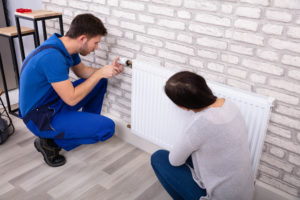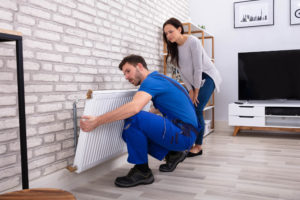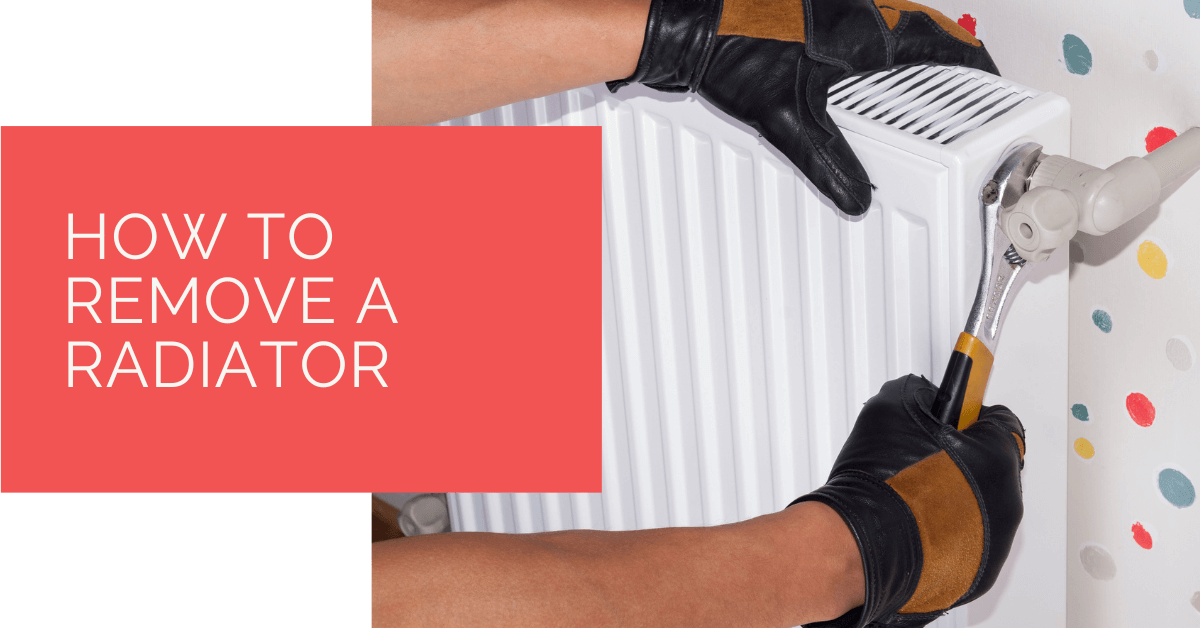If you’re like most people, removing a radiator probably fills you with dread. It doesn’t have to be difficult, though! In this guide, we’ll walk you through the process. All you need are some basic tools and a little bit of know-how. So don’t worry – we’ll have you remove that radiator soon!
Contents
Key Takeaways
- Removing a radiator can be done with basic tools and know-how, making it a manageable DIY task.
- The process involves switching off the heating, turning off valves, draining the radiator, and disconnecting it from the wall.
- The entire process typically takes around 30 minutes, and cleaning up any remaining water after removal is essential.
What You Will Need
- Radiator bleed key
- Adjustable spanner, or wrench
- Washing up bowl
- Towels
Step by Step Guide for Removing a Radiator
Switch Off Your Heating
Before you do anything, you’ll need to switch off your heating at the mains and allow the central heating system to cool down.
Turn Off the Valves
Once the system has cooled down, you’ll need to turn off the valves that supply water to the radiator. There will be one valve at each end of the radiator. Turn the thermostatic radiator valve (TRV) to the zero or off position.

Drain the Radiator
Place a bowl beneath the valve you want to drain first. Tighten the nut that joins the radiator to the valve with one wrench while loosening the nut which connects the radiator to the valve with another. The water will drain out and into your bowl.

Open the Bleed Valve
Now it’s time to bleed the radiator. This will help remove any more water in the radiator. To do this, you’ll need a radiator bleed key. Place the key into the bleed valve (this is usually located at the top of the radiator) and turn it anti-clockwise. Once the water stops dripping out, close the valve by turning it clockwise again.
Disconnect the Radiator
Once the radiator is empty, you can disconnect it from the wall. Use your adjustable spanner to loosen the nuts that hold the radiator in place. You may need to use a little force to break them free.
Remove the Radiator from The Brackets
Now you can lift the radiator from its brackets. Be careful not to damage the wall as you do this.

Clean Up
Once the radiator is out, you’ll need to clean up any water that’s been left behind. Use a towel to soak up any remaining water and then leave the area to dry completely.
FAQ
What Tools Do I Need to Remove a Radiator?
To remove a radiator you will need a radiator bleed key, adjustable spanner, or wrench, washing up bowl, and towels.
Can You Remove a Radiator Yourself?
Yes, you can remove a radiator yourself with some basic tools and a little bit of know-how. Follow the steps in this guide to remove your radiator safely and without damaging your walls.
How Long Does It Take to Remove a Radiator?
The whole process should take around 30 minutes.
Heat Pump Source: Reliable Heating and Cooling Solutions
At Heat Pump Source, we take pride in our unwavering commitment to serving the UK with top-tier HVAC solutions. From the efficiency of heat pumps and the cool relief of air conditioning to the warmth of boilers, radiators, and underfloor heating, our dedicated team is always at the forefront of innovation. We understand the unique needs of every household and business, and we strive to provide dependable health and cooling products and services that are tailored just for you. Ensuring your comfort and satisfaction is our utmost priority. Whether you have questions, need guidance, or require support, we’re always here to assist. Please don’t hesitate to contact us; we’re eager to be of service.
Conclusion
Now you know how to remove a radiator, the process doesn’t seem so daunting anymore! With this guide, you’ll have that radiator out in no time. Just remember to switch off your heating, turn off the valves, drain the radiator, and bleed the valve before you start. And don’t forget to clean up afterward!
About the Author
At Heat Pump Source, our articles are the product of a collaborative effort among a team of highly skilled HVAC experts. Our dedicated professionals, hailing from diverse backgrounds in heating, ventilation, air conditioning, and refrigeration, contribute their extensive knowledge and experience to every piece of content. This multidisciplinary approach ensures comprehensive coverage. Our commitment is to deliver authoritative, reliable, and tailored advice to meet the unique needs of every household and business across the UK.

